DySoC / Exeter Webinar Series
Evolution and Social Systems
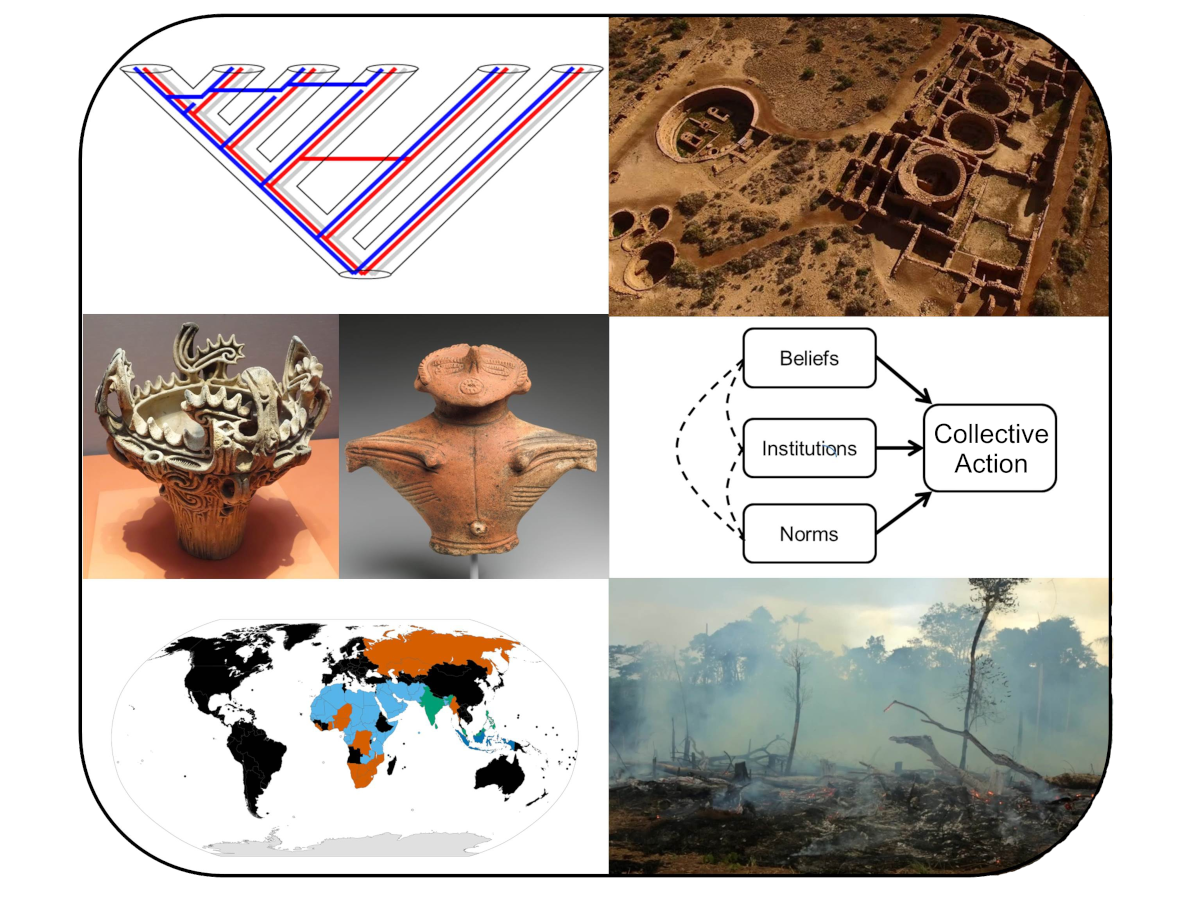 The Center for the Dynamics of Social Complexity and University of Exeter are happy to announce a series of free webinars for Fall 2021 on
Evolution and Social Systems.
This series is a continuation of the past semester seminars:
DySoC/NIMBioS Webinar Series on Cultural Evolution and
DySoC/NIMBioS Webinar Series on Human Origins and Cultural Evolution.
The Center for the Dynamics of Social Complexity and University of Exeter are happy to announce a series of free webinars for Fall 2021 on
Evolution and Social Systems.
This series is a continuation of the past semester seminars:
DySoC/NIMBioS Webinar Series on Cultural Evolution and
DySoC/NIMBioS Webinar Series on Human Origins and Cultural Evolution.
Organizers: Thomas Currie (University of Exeter, Penryn Campus, Cornwall ) and Sergey Gavrilets (Ecology & Evolutionary Biology and Mathematics, DySoC Director, University of Tennessee)
Co-organizer: Peter J. Richerson (University of California, Davis)
Human social systems are extraordinarily complex and diverse. Around the world, people are organized into different societies that are structured by a variety of different institutions, social norms, beliefs, languages, and other aspect of culture. Understanding how societies function and why societies are the way they are, are topics of interest to a wide variety of different academic disciplines. Evolutionary thinking can help bring together the insights from different disciplines and approaches, and can play an important role in understanding the similarities and differences between human societies and those of other species, the ways that different environmental contexts present different challenges that societies have adapted to, how and why culture and societies change over time, and how different cultural histories have shaped the world we live in today. In this interdisciplinary seminar series we present talks from a variety of researchers, including anthropologists, archaeologists, behavioural ecologists, economists, psychologists, and sustainability scientists. As many of the talks will illustrate, this work is not only of academic interest but is increasingly important in addressing some of the biggest social and ecological challenges we face in the world today.
The seminar series is funded by grants from the John Templeton Foundation and the European Research Council. (European Research Council (ERC) funding awarded to Thomas Currie under the European Union’s Horizon 2020 research and innovation programme (The Cultural Evolution & Ecology of Institutions, grant agreement no. 716212)

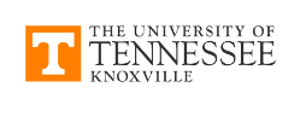
2021 Fall Schedule (eastern time)
YouTube Playlist for past webinars.»

- Sep 28, 11:45 a.m. EDT Simon Levin (Princeton University)
Public goods and environmental challenges: Learning from evolution
- Oct 5, 11:45 a.m. EDT Nathan Nunn (Harvard University)
Cultural Mismatch
- Oct 12, 11:45 a.m. EDT Kristen Hawkes (University of Utah)
Sexual selection, carnivory, and life history evolution in the human radiation
- Oct 21, 11:45 a.m. EDT Giulia Andrighetto (Institute of Cognitive Sciences and Technologies (ISTC) at CNR, Malardalen University, Vasteras, Sweden
)
Norm change and cooperation under collective risk in a long-term experiment
- Oct 26, 11:45 a.m. EDT Anne Pisor (Washington State University)
Long-distance social connections, collective-action problems, and climate-change adaptation - Nov 2, 11:45 a.m. EDT Timothy Njagi (Egerton University, Kenya)
A comparative perspective on the evolution and sustainability of pastoralist production systems - Nov 9, 11:45 a.m. EST Monique Borgerhoff Mulder (MPI-EVA Leipzig, UC Davis, Santa Fe Institute)
How Many Wives? Tracing the Interdisciplinary Career of the Polygyny Threshold Model - Nov 16, 11:45 a.m. EST Stefani Crabtree (Utah State University & Santa Fe Institute)
Modern Lessons of applying Socio-Environmental Modeling to the Archaeological Record - Nov 23, 11:45 a.m. EST Matthijs van Veelen (University of Amsterdam, Netherlands)
The evolution of morality and the role of commitment - Nov 30, 11:45 a.m. EST Heidi Colleran (Max Planck Institute for Evolutionary Anthropology)
The impossibility of "natural fertility" in human cultural systems - Dec 7, 7:00 a.m. EST Naoko Matsumoto (Research Institute for the Dynamics of Civilizations, Okayama University)
What’s so special about the Jomon?
2021 Fall Webinars
Public goods and environmental challenges: Learning from evolution
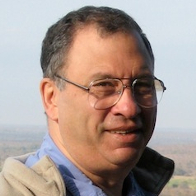 Date: 11:45 a.m. EDT Tuesday, September 28, 2021
Date: 11:45 a.m. EDT Tuesday, September 28, 2021
Speaker: Simon Levin (Ecology & Evolutionary Biology, Princeton University)
Topic: Public goods and environmental challenges: Learning from evolution
Abstract: Ecological and economic systems are alike in that individual agents compete for limited resources, evolve their behaviors in response to interactions with others, and form exploitative as well as cooperative interactions as a result. In these complex adaptive systems, macroscopic properties like the flow patterns of resources like nutrients and capital emerge from large numbers of microscopic interactions, and feed back to affect individual behaviors. In this talk, I will explore some common features of these systems, especially as they involve the evolution of cooperation in dealing with public goods, common pool resources and collective movement. I will describe examples from bacteria and slime molds to vertebrate groups to insurance arrangements in human societies and international agreements on environmental issues. These present mathematical challenges including scaling from the microscopic to the macroscopic, the emergence of pattern, critical transitions and conflicts between the interests of individuals and the good of collectives.
Webinar slides (pdf)
Some questions posed by webinar participants
- Nations are sometimes treated as equal individuals (as in votes in the UN GA), but are in reality considerably different. How do these considerable power differences change the way we should model cooperation? What analogies are there in nature or elsewhere for such a situation?
- Does the existence of cooperation to address one public good make it easier for cooperation to emerge to address a second, separate public good? How much does the answer to that question depend on the spatial scales of the two public good being similar?
- Can inequalities in resource and power distribution positively or negatively affect cooperation in maintaining public good?
- How difficult is it to change social norms on specific issues when they come into conflict with larger philosophies within the society? For example, decarbonization vs GDP growth or mask wearing vs individual freedoms?
- You mentioned that in prosocial systems, cooperation is easier to be foster relative to non-prosocial. I could not understand the argument. My intuition would say that if everyone behaves cooperatively, people become more susceptible to cheating, as cheating becomes less expected. For instance, it might be easier for exploitation in a church relative to a random group of individuals? (assuming people in the church are more prosocial)
- What work might you be familiar with on the way that top down cultural prescriptions such as social norms interact with basic individual psychology.?
Selected questions are discussed in the Q&A session at the end of the webinar.
Cultural Mismatch
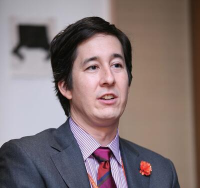 Date: 11:45 a.m. EDT Tuesday, October 5, 2021
Date: 11:45 a.m. EDT Tuesday, October 5, 2021
Speaker: Nathan Nunn (Frederic E. Abbe Professor of Economics, Harvard University)
Topic:Cultural Mismatch
Abstract: The presentation will be an overview of recent empirical research by the author on the nature of cultural persistence and change. Particular attention will be paid to the interplay between culture, institutions, and policies both historically and today and the implications of this for contemporary economic success and economic crisis.
Webinar slides (pdf)
Some questions posed by webinar participants
- A mismatch I’ve long found fascinating is from Ancient Greece where the cultural texts of Homer were celebrating the much earlier Mycenean warrior, palace centered culture while the 5th century BC culture was city centered. Have you looked at historical examples like this (or like the independent cowboy myth in urban America today)?
- If whole ethnic groups can be &lsquotraumatized&lsquo by historic &lsquoshock&lsquo events like the slave trade which cause a lack of trust for generations, can they also be encouraged to follow certain practices if historic events have led to large rewards?
- Regions with high climatic instability may also lead to more and early migration, giving them time to adjust with new traditions. Was the year of migration controlled for?
- do you think ancestral climate instability is a causal factor in eg. indigenous language loss, or just a correlation
- Do you think natural selection has over past few hundred/thousand years been operating on conformity (differently in different populations) given differing rates of change in environmental variability, or are you principally positing operation of a pan-human facultative psychology that tailors conformism to environmental variability?
- so what to do about vaccinating countries with a &lsquobad&lsquo historie, a slavery historie. We cannot change the past, but can we help now still? How?
- Does &lsquomismatch&lsquo depend on your time horizon? What might be a &lsquomismatch&lsquo on a short term horizon given some large exogenous shock might actually be adaptive on a longer time horizon?
- For the gobal data studies, have you corrected for cultural and climatic correlations between regions/countries? I.e. your samples are clearly not independent.
- Does monetary instability, like climate instability, impact cultural stability.
- I am fascinated by the quantity of different data sources used in these reasearch papers! Amazing work! I am interested in examining the effects of sexual freedom and cultural acceptance of female sexual choice and short term mating. It seems to be related to economic growth and peace index. Are you aware of any existing data sources or datasets that might help in understanding short term mating propensity (like a number of sexual partners etc.) or cultural attitudes towards such behaviors in women?
- If we make the hypothesis that, for example distrust, migh have some extent of heritability (which is likely to be the case) up to which extent these mid and long term phenomena of persistence can be explained by genetic selection and genetic transmission? After all those thet were cautios and mistrusting survived and remained in that region intstead of being misplaced? I know this sounds like nature vs nurture question, but was there any assessment of the mechanims od transmission: up to which extent is cultural vs genetic?
- Can you speculate as to how these historic influences impact individual reasoning in connection with behavior?
- Thank you very much for the fascinating presentation! I wonder, if the fraction of traditionalists impact the cost of being innovative (kappa), could we end up in a vicious vs virtuous circle instead of a transition towards the optimal equilibrium? What implications would this have?
Selected questions are discussed in the Q&A session at the end of the webinar.
Sexual selection, carnivory, and life history evolution in the human radiation
 Date: 11:45 a.m. EDT Tuesday, October 12, 2021
Date: 11:45 a.m. EDT Tuesday, October 12, 2021
Speaker: Kristen Hawkes (Anthropology Department, University of Utah)
Topic: Sexual selection, carnivory, and life history evolution in the human radiation
Abstract: Claims that paternal provisioning is the fitness payoff for big game hunting and aggressive scavenging are a cornerstone of the hunting hypothesis about the evolution of our genus. But challenges to those claims are substantial making the deep archaeological record of human carnivory a puzzle. An answer that aligns with Darwin’s insights about the importance of sexual selection in human evolution comes from a grandmother hypothesis about the evolution of human postmenopausal longevity. As lifespans increased in our radiation, more seniors biased the mating sex ratio toward males. More males in the mating pool shifted paternity winnings to those successful at guarding a mate. If success depended on others’ deference, Darwin’s surmise in Descent is directly relevant. He said ancestral males likely earned admiration by displaying courage and pugnacity. Exactly those qualities would be on display in dangerous contests with big carnivores for large carcasses. If risks of substantial harm gained deference for proprietary mating claims, the carnivory in early Pleistocene archaeology is a record of male mating competition.
Webinar slides (pdf)
Some questions posed by webinar participants
- To what extent do the younger girls also contribute to both food acquisiton and care of their younger siblings? That is, complimenting the grandmothers are there “babysitters?” It strikes me that particularly in patrilocal groups this would be a way for young women to integrate themselves into female support hierarchies.
- what is the efficiency of energy moving through grandmother given the energy needs of keeping grandmothers alive. are grandmother’s self supporting.
- If tribal memory keeping isn’t so much in terms of actual knowledge, to what extent might it be more related to ways of approaching situations (e.g., learned caution, ways of searching rather than remembering where things are, and so on).
- .. even if the grandmothers don’t forage, just by looking after the small ones, wouldn’t they contribute to increased productivity of mothers? They are like capital in a production function!
- Do you see OSR as insufficient to motivate male competition via display of productive skill, absent effect of menopause?
- I recall sometime in the late 70s attending a seminar by Rom Harre with a title “Too Many Women” where he looked at the influence of sex ratios on the “agressiveness” of modern nations.
- This is actually Sue Blackmore (thanks for link Burton), mate guarding is common in other species. Does this also depend on the sex ratio?
Selected questions are discussed in the Q&A session at the end of the webinar.
Norm change and cooperation under collective risk in a long-term experiment
 Date: 11:45 a.m. EDT Thursday, October 21, 2021
Date: 11:45 a.m. EDT Thursday, October 21, 2021
Speaker: Giulia Andrighetto (Institute of Cognitive Sciences and Technologies (ISTC) at CNR, Malardalen University, Vasteras, Sweden)
Topic: Norm change and cooperation under collective risk in a long-term experiment
Abstract: Social norms are a crucial part of the solution to our most pressing societal challenges, from mitigating climate change to reducing the spread of infectious diseases. Despite their relevance, how norms shape cooperation among strangers is still insufficiently understood. Influential theories suggest that the level of exogenous threats faced by different societies plays a key role in the strength of the norms that different cultures have evolved. Still causal evidence of exogenous threats on norms has not been so far collected. Here we deal with this dual challenge using a 30-day collective-risk social dilemma experiment to observe and measure norm change in a controlled setting. We ask whether a looming but uncertain collective catastrophe changes the strength of the social norms of cooperation that may avert it. We find that social norms predict cooperation and causally affect behavior. We also provide the first empirical demonstration that higher risk spontaneously lead to stronger social norms and that, when the risk changes, stronger social norms are more resistant to erosion. Still, the foreseeable loosening of norms in low risk settings has important policy implications. Taken together, our results demonstrate the causal effect of social norms in promoting cooperation and their role in making behavior resilient in the face of exogenous change.
Webinar slides (pdf)
Some questions posed by webinar participants
- What was the cultural background of the subjects in your study? I'm thinking about the issue of WEIRD subjects possibly giving results that are only valid for WEIRD culture.
- Did participants know the risk schedule (i.e. that it was going to stay the same for a while)?
- Did points accumulate across days?
- Did participants receive a real-world payoff?
- One issue I see with these sorts of experiments is that the factor of individual identificsation with group norms is likely to be small whereas in actual social groups there can be very strong group identification, to the extent that responses to defection from norms can become an identity threat that is conflated with threat to individual survival.
- How would you see your findings in the context of the Cultural Theory of Risk ? In particular, what would be the relationship between Norm Strength and Cultural Risk Perception? This is of particular relevance because in non-experimental settings, perceptions about the capriciousness of risk are culturally mediated
- Very nice experiments. I was wondering if there is a difference between perceived threat and experienced risk. For example, in the low-high risk treatment, do individuals change their behaviour only after experiencing disaster or do they change immediately upon being told that the risk is higher?
- I might have missed this, but to what extent did the subjects (or were the subjects allowed to) communicate with one another? Separately, in your opinion, what theoretical gaps does your work highlight?
- Have you thought of introducing "unfairness" into future experiments. Perhaps you could ask subjects to do tasks in order to "earn" the tokens. Some would have to do harder tasks. Do you think this might have an effect?
- If I understood correctly, the question regarding punishment was presented only at the end of the study. Would social norms be stronger if punishment occurred on a daily basis?
- Related to Sergey's question and current replies, what was the percentage of threshold-driven participants? Is it a danger that empirical norms backfire - i.e., are there many subjects that downregulate contributions when expecting others to increase?
- I'm the anonymous attendee above — I should have been clearer in my language. I meant to say: what theoretical / modeling studies would you like to see based on the findings in your study?
Selected questions are discussed in the Q&A session at the end of the webinar.
Long-distance social connections, collective-action problems, and climate-change adaptation
 Date: 11:45 a.m. EDT Tuesday, October 26, 2021
Date: 11:45 a.m. EDT Tuesday, October 26, 2021
Speaker: Anne C. Pisor (Department of Anthropology, Washington State University)
Topic: Long-distance social connections, collective-action problems, and climate-change adaptation
Abstract: Humans are group-living and find groups highly salient, so unsurprisingly much of the focus in the evolutionary human sciences has been on intergroup competition and parochialism. However, this overlooks the flexibility of human relationships that span group boundaries or span distance; when present, these can have profound effects on the structure and information transmission of social networks. In this talk, I'll provide an overview of my work on long-distance social connections and their relevance for studying two of the most pressing issues of the 21st century: sustainable resource management and climate change. First, large common-pool resources, like fisheries and forests, are difficult to manage because so many communities can access them. Can connections between communities help us predict when management will be successful? Second, humans have a long history of adaptation to climate change, and many of these climate-change adaptations were and are cultural. Studying contemporary peoples, how does cultural adaptation to climate change alter social networks, and how do these changes to networks alter the transmission of climate-change adaptations in turn? I conclude by highlighting future directions for research on long-distance connections, both in the theoretical and applied domains, and where my lab is headed next.
Webinar slides (pdf)
Some questions posed by webinar participants
- Am I the only person who is losing the picture from time to time?
- It seems to have stopped now.
- Your slides mention Pisor & Jones 2021, in press. Is this the recently-published paper in Jr. Human Biology, or a different paper? If the latter, could you provide the citation? Thanks.
- Given a group of n communities with LDR connections monitoring a common resource, is there a relationship between the number of individuals connected by LDR and the quantity (and quality) of information exchange required to manage the resource. Is there an optimal arising from issues of information overload?
- fantastic talk -- wondering about 'down sides' to LDRs, namely do you find these interactions lead also to conflict, for instance by bringing competitors into contact looking for the same connections or payoffs wihtin a region or network?
- There are some good example of how LDRs are maintained in the Odyssey when visitors are feasted and gifted.
- Have you looked at pre-industrial communications technology such as drums, beacon fires, smoke signals etc.
- Yes, also thinking about social networks today when all sorts of information comes in everyday.
- One of the first things Napoleon would do after conquering a new territory would make French the official language and teach locals French. What is the role of language in long-term relationships?
- Is the term adaptation appropriate to describe the “top down” techniques for solving local problems? Adaptation implies that the local people created them (or discovered them).
- Chat: There is clearly a trade-off between local adaptation and risk management. This is something we specifically talk about in Jones, Ready, Pisor (2021) and makes total sense of Pete's point. When the environment pushes you more toward risk-management (e.g., late Pleistocene), you're ok with paying the price of local adaptation. We need to be very careful to not let hegemonic cultural forces swamping local adaptation now.
Selected questions are discussed in the Q&A session at the end of the webinar.
A comparative perspective on the evolution and sustainability of pastoralist production systems
 Date: 11:45 a.m. EDT Tuesday, November 2, 2021
Date: 11:45 a.m. EDT Tuesday, November 2, 2021
Speaker: Timothy Njagi (Tegemeo Institute of Agricultural Policy and Development, Egerton University, Kenya)
Topic: A comparative perspective on the evolution and sustainability of pastoralist production systems
Abstract: Pastoral communities worldwide occupy areas that are vast and primarily considered marginal lands. These lands are characterised by arid and semi-arid conditions such as high temperatures and low rainfall. Primarily, communities practise extensive livestock production systems that are adaptable to these conditions. Traditionally, pastoral communities have accessed and managed these lands collectively, under customary systems. However, public policy has not always supported land access and utilisation systems used by pastoral communities. Over the years, pastoralism has been perceived as backward, contributing to environmental degradation, and inefficient land use. Government programs favouring land intensification are being pushed in pastoral areas despite evidence of their effectiveness, especially on productive and livelihood support systems. This is a result of misconceptions about pastoralism as a productive system. We compare the evolution of land tenure systems and their effect on pastoralists production systems in East African and Latin America, two continents with significant pastoralists communities where cultural identity is strong, community systems still exist, and both face similar pressures on their livelihoods. The objective is to learn how the evolution of land tenure systems in pastoral areas has impacted the sustainability of pastoralists production systems and draw lessons from these communities to facilitate policies that improve the social and economic status of pastoral communities.
Webinar slides (pdf)
Some questions posed by webinar participants
- Thank you for your talk. I am curious about the role of marriage and inheritance in the emergence of inequalities. I work in central Chile, and I've seen how inter-community marriages or differences in the number of heirs can lead to a few families concentrating membership to various communities, and hence access to various collective lands, while other families are relegated to compratively small fields. Have you seen this pattern of accumulation in the cases you have studied? Maybe this does not happen at all in places with unilateral descent and/or unigenitural inheritance.
- Thanks for your talk. Can you speak to how social norms, such as inheritance customs, contribute to pressures to obtain land outside the tribe or clan?
- Has there been any land zoning applied as part of the privatization and sale of land.
- I know your focus was no on ranching and feedlot, but why is productivity so low, especially when (as you said) the process of getting meat to the market is faster (4 versus 7 yrs for pastoralists)?
Selected questions are discussed in the Q&A session at the end of the webinar.
How Many Wives? Tracing the Interdisciplinary Career of the Polygyny Threshold Model
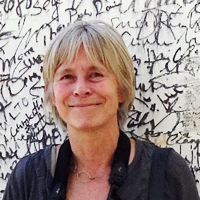 Date: 11:45 a.m. EST Tuesday, November 9, 2021
Date: 11:45 a.m. EST Tuesday, November 9, 2021
Speaker: Monique Borgerhoff Mulder (MPI-EVA Leipzig, UC Davis, Santa Fe Institute)
Topic: How Many Wives? Tracing the Interdisciplinary Career of the Polygyny Threshold Model
Abstract: Human behavioural ecologists take, as a starting point, models derived from the study of the social behaviour of non-human animals, but as the field matures there are emerging deep intersections with other disciplines, particularly anthropology, economics and policy. I illustrate this through a history of the study of polygynous marriage, starting with the polygyny threshold model, its applications within the anthropological literature, and the import of this work for explaining the distribution of polygyny globally. These findings both complement and contrast with those of economists, and have implications for an understanding of the historical origins of monogamy, for understanding patterns of female cooperation and competition, and for the legitimacy of current policies calling for outlawing polygynous marriage. I end with a prospective review of how such models can be tweaked to answer the parallel question of “How many husbands?”, an as yet relatively underdeveloped area of investigation in the human evolutionary sciences.
Webinar slides (pdf)
Some questions posed by webinar participants
- For what things cowives cooperate and compete? Why having more cowives does not decrease child mortality one of your earlier slides)?
- Does polygamy promote equality in the long term because the fathers wealth has to be distributed among all his offspring?
- How does generational inheritance affect wealth concentration. If there is a minimum wealth (land size), then how does this limit polygamy.
- You found polygamy is a decreasing function of richness. Genghis Khan has roughly 16 million descendants living today. What makes Genghis Khan an outlier?
- How is richness inherited in the pastoral systems that you found?
- Embodied capital approach suggests the theta effect may involve increasing costs of producing economically successful offspring- do you think that could drive the effect you observe?
- Is polyandry also related to richness? Are cooperative behaviors more common in polyandry or polygyny societies?
- Does health/lifespan have an impact on feasibility of polygny. Death in childbirth would have a huge factor on structure of family.
- Great talk, thank you! How would you expect the PGT model to interact with the sorts of male-skewed sex ratios we see in some modern patriarchal societies?
- By inclusive fitness theory, I would expect cooperation to be more present in polygamy where sisters are married to the same husband relative to a husband being married with unrelated wives. Is there any data on that?
Selected questions are discussed in the Q&A session at the end of the webinar.
Modern Lessons of applying Socio-Environmental Modeling to the Archaeological Record
 Date: 11:45 a.m. EST Tuesday, November 16, 2021
Date: 11:45 a.m. EST Tuesday, November 16, 2021
Speaker: Stefani Crabtree (Assistant Professor in Social-Environmental Modeling, Department of Environment and Society, College of Natural Resources, Utah State University & Santa Fe Institute)
Topic: Modern Lessons of applying Socio-Environmental Modeling to the Archaeological Record
Abstract: Archaeology provides rich data of the past 60,000 years of human-environment interaction, yet it remains under-utilized for examining present ecosystems. However, modern methods can harness the explanatory power of the past to calibrate our understanding of the present and predict how we will face challenges in the future. In this vein approaches from complex adaptive systems science including agent-based modeling and network science prove particularly promising. By simulating societies in silico agent-based models and networks have enabled researchers to not only understand previously intractable aspects of the past, but also to use these simulations to predict what can make resilient societies and what lead them toward vulnerabilities to external perturbations. My work has used agent-based modeling, social network analysis, and trophic network analysis (or food web modeling) to examine robustness and vulnerabilities of societies from the American Southwest, to northern Mongolia, to Aboriginal Australia. In this talk I explore the unique ways that socio-environmental modeling can help us understand the lifeways of societies worldwide, and also suggest that understanding how people interacted in their uniquely challenging environments can provide parallels to understanding humanity’s position in ecosystems today. Only through applying a complexity lens can we truly understand how the actions and interactions of people led to the large overarching structures we see today.
Some questions posed by webinar participants
- Submerged archeological sites off the coast of Florida indicate significant settlements. How do you handle the bias of archeological sites that exist in locations that are preserved vs sites that are in more transient locations.
Selected questions are discussed in the Q&A session at the end of the webinar.
The evolution of morality and the role of commitment
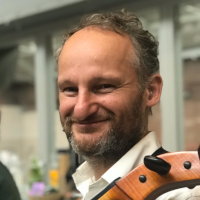 Date: 11:45 a.m. EST Tuesday, November 23, 2021
Date: 11:45 a.m. EST Tuesday, November 23, 2021
Speaker: Matthijs van Veelen (Evolution and Behaviour at CREED, University of Amsterdam, Netherlands)
Topic: The evolution of morality and the role of commitment
Abstract:
A considerable share of the literature on the evolution of human cooperation considers the question why we have not evolved to play the Nash equilibrium in prisoners' dilemmas or public goods games. In order to understand human morality and pro-social behaviour, we suggest it would actually be more informative to investigate why we have not evolved to play the subgame perfect Nash equilibrium in sequential games, such as the ultimatum game and the trust game. The "rationally irrational" behavior that can evolve in such games gives a much better match with actual human behaviour, including elements of morality such as honesty, responsibility, and sincerity, as well as the more hostile aspects of human nature, such as anger and vengefulness. The mechanism at work here is commitment, which does not need population structure, nor does it need interactions to be repeated. We argue that this shift in focus can not only help explain why humans have evolved to know wrong from right, but also why other animals, with similar population structures and similar rates of repetition, have not evolved similar moral sentiments. The suggestion that the evolutionary function of morality is to help us commit to otherwise irrational behaviour stems from the work of Robert Frank, which has played a surprisingly modest role in the scientific debate to date.
Extended Blogpost
Some questions posed by webinar participants
- In considering a factor such as inequity aversion, to what extent will cultural conditioning come in? For example, in a feudal society a person at the bottom of the social ladder might feel that an aristocrat was being generous in offering a pittance that another aristocrat would take as an insult and challenge.
- Is it fair to say that if individuals can interact repeatedly as you describe and develop commitment, then individuals are not playing a simple one shot ultimatum or trust game?
- Can you make a connection between internal psychological traits that act as “factors of attraction” for the evolution of cultural forms that both favor making commitments and making public expression of these commitments?
- In the population structure example with Prisoner’s Dilemma, could people also look at the overall payoff for the cooperative group vs the defector group, and if the cooperative group overall has higher payoff that would seem to motivate defectors to at least seek to join that group (I think this goes with the "old boys network").
- Does the logic of commitment apply also the “finitely” repeated prisoner’s dilemma? Is there room for a joint commitment of a dyad for instance and not only as commitment of an indvidual?
- What role does novelty/boredom play in human decision processes. Often I see people play games with a goal for a more interesting outcome than even to win. This seems to be true especially when they are not losing or above a certain "wealth" level.
- Does a repeated interaction with one individual look exactly like playing randomly, but with the possibility of commitment, within a reputation group?
- In a game like poker, players gain reputation through their play and how they respond to different situations at the table and the actions of other players. But a smart player will also use this to establish a reputation, only to go against their expected behavior at an opportune moment.
- yes, that's what I had in mind.
- When they help cooperation, repetition and relatedness/assortment make doing what's good for the dyad/group also individually rational. For commitment to explain cooperation, I would think you need a mechanism to make following through on commitment individually rational in the subgame. Do you agree? Do you think that mechanism is a mix of things we already know (assortment, repetition, partner choice)? Or is it something else?
Selected questions are discussed in the Q&A session at the end of the webinar.
The impossibility of "natural fertility" in human cultural systems
 Date: 11:45 a.m. EST Tuesday, November 30, 2021
Date: 11:45 a.m. EST Tuesday, November 30, 2021
Speaker: Heidi Colleran (Max Planck Institute for Evolutionary Anthropology Department of Human Behavior, Ecology and Culture)
Topic: The impossibility of "natural fertility" in human cultural systems
Abstract: The idea of a naturalized state of human reproduction ("natural fertility") permeates evolutionary anthropology and demography, and is foundational for most population modelling, including in cultural evolution. In this talk I’ll provide an overview and a critique of this assumption. I’ll argue that natural fertility creates unnecessary ethical, theoretical and conceptual problems for evolutionary researchers. Putting pressure on this core assumption opens up whole new areas of research. Drawing on a range of real-world examples, and my work on the demographic transition, I will argue that if we are to take cultural evolution seriously, there can be no such thing as natural fertility, either now or in the past.
Webinar slides (pdf)
Some questions posed by webinar participants
- How much data do you have on conversations between women on reproduction and the desirability of children, as compared to conversations on these between men?
- Thanks so much for your talk.
- How should underlying economic structure be incorporated in the analysis of fertility. in the case of contraception with sarif class, is this an economic spacing?
- Thanks for a very interesting and informative presentation!
- Wonderful talk, Heidi. Any cultural trait that affects the efficiency of reproduction will, in theory, be subject to natural selection. It will take several generations for these affects to be noticed. Are there any plans to attempt to explain how some high fertility populations fend off low-fertility norms. Do you think they will be able to continue to do this?
- How is it possible such tine Island to have so many languages?
- Tasmanian tribes come from Australia. Research showed that Tasmanian's lost a lot of their tools. The explanation for this loss in technology is due to the small pop size. What makes the dynamic of language evolution fundamentally different from technology?
- Do you feel that there is an opportunity for your findings to influence development policy?
- Out of curiosity, how is covid vaccination going there? And how these considering the different cultures might affect the vaccination program?
Selected questions are discussed in the Q&A session at the end of the webinar.
What’s so special about the Jomon?
 Date: 7:00 a.m. EST Tuesday, December 7, 2021
Date: 7:00 a.m. EST Tuesday, December 7, 2021
Speaker: Naoko Matsumoto (Director of the Research Institute for the Dynamics of Civilizations, Department of Archaeology, Okayama University)
Topic: What’s so special about the Jomon?
Abstract: The Jomon is defined as a period of hunter-gatherers with pottery on the Japanese Archipelago and spans approximately 13,000 years. The Jomon is well known as a sedentary hunter-gatherer society with the rich material culture of pottery and clay figurines. Still, there was a great deal of regional diversity, and dynamic socio-cultural changes can be seen. In this talk, I will give an overview of the characteristics of the Jomon period, taking into account the latest research trends on subsistence and material culture. Research, Okayama University
Webinar slides (pdf)
Some questions posed by webinar participants
- Does Jomon pottery and artifacts support an origin of later Shintoism.
- What happened to the Jomon people? to what extent are they ancestral to the modern Japanese population?
- To what extent was hunting important; animal remains?
- Is there no evidence from burial goods or buildings that suggests high social status of some individuals such as chiefs or leaders?
Selected questions are discussed in the Q&A session at the end of the webinar.
For questions, please contact DySoc Director Sergey Gavrilets at gavrila@utk.edu.
The seminar series is funded by grants from the John Templeton Foundation and the European Research Council.
Contact DySoC
Sergey Gavrilets, Director
403B Austin Peay
University of Tennessee
Knoxville, TN 37996-3410
PH: (865) 974-8136
FAX: (865) 974-3067
Email
Website: http://www.dysoc.org
DySoC is affiliated with The University of Tennessee, Knoxville

